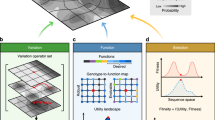Abstract
Evolvable hardware, particularly evolvable electronic circuitry, is being vigorously explored as a means to enhance performance and survivability. However, antennas are also excellent candidates for evolvable hardware, as they are crucial components in any wireless system, and changes in the environment can seriously affect antenna performance. The evolvable antenna system in this paper shows that an evolutionary algorithm and a reconfigurable antenna can be used to optimize signal reception in-situ, i.e., in real surroundings, rather than in simulation or even on an antenna range. Several reconfigurable antenna topologies were tested, and all were able to outperform a conventional antenna.
Similar content being viewed by others
Author information
Authors and Affiliations
Corresponding author
Additional information
The research described in this paper was performed for the Evolvable Hardware program at the Center for Integrated Space Microsystems, Jet Propulsion Laboratory, California Institute of Technology, and was sponsored by the National Aeronautics and Space Administration. We are very grateful for their support. Thanks also to G.R. Freeth for his feedback regarding using AM signals to determine signal strength.
Rights and permissions
About this article
Cite this article
Linden, D. Evolving antennas in-situ . Soft Computing 8, 325–331 (2004). https://doi.org/10.1007/s00500-003-0289-8
Published:
Issue Date:
DOI: https://doi.org/10.1007/s00500-003-0289-8




